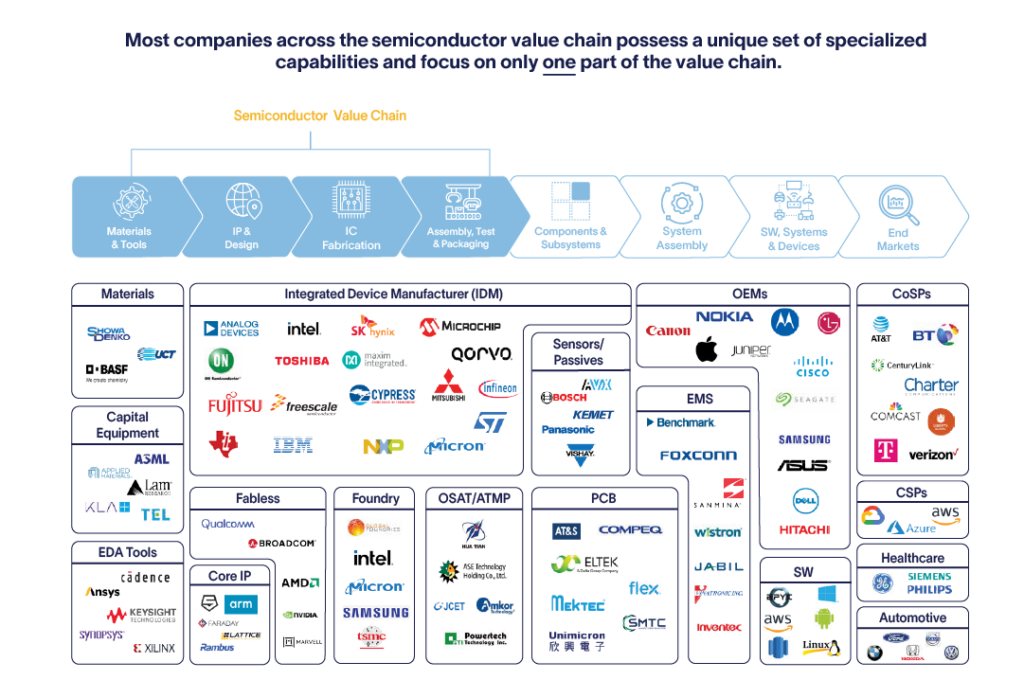INSIGHTS
The Semiconductor Ecosystem: Complex, Global, and Specialized
While the COVID-19 pandemic was a humanitarian and economic crisis, pandemic-era spending and mass adoption of remote and hybrid work models drove increased adoption of digital technologies – changes that are most likely to stick in the years to come. As a result, the semiconductor industry witnessed two years of supercharged growth. The World Semiconductor Trade Statistics reported that the worldwide semiconductor market growth rose from 6.8% in 2020 to an outstanding 26.2% in 2021, reaching a market size of U.S. $556 billion.
However, more recently, the U.S. equity market is trading at levels that suggest significant macro weakness for the semiconductor sector. The PHLX Semiconductor Index in particular is down 30% for the year, compared with the 23% year-to-date decline for the Nasdaq. Surging inflation, lockdowns in China, ongoing supply chain disruptions, and Russia’s invasion of Ukraine have coincided with a return to in-person work this year in ways that have negatively impacted the semiconductor industry.

Despite market volatilities and several companies lowering revenue forecasts, the semiconductor industry is poised for sustained long-term growth over the next decade to become a trillion-dollar industry by 2030.1 From computing devices to smart appliances, automotive to healthcare equipment, data centers to satellites in space, semiconductors or chips are the brains inside every electronic device and innovation. More than ever, the entire technology value chain, down to the end user, depends on the semiconductor industry to provide the computing power necessary for all technologies to reach their full potential.
While there is a lot of talk about chips and semiconductors, our latest infographic seeks to demystify the complexities of how this industry is structured, with a high-level view of:
- The end-to-end technology value chain, spanning materials, IP, and chip fabrication through to device manufacturers, system operators, and end users
- Economic Value Added* and geographic concentration across segments of the semiconductor value chain
- Key drivers and value capture potential of the value chain segments moving forward as semiconductors play an increasingly important role in the overall system
Please complete the form below to receive the full infographic.
Sources:
1 SEMI
*Economic Value Added is a measure of contribution of the sector to the overall economy (GDP).